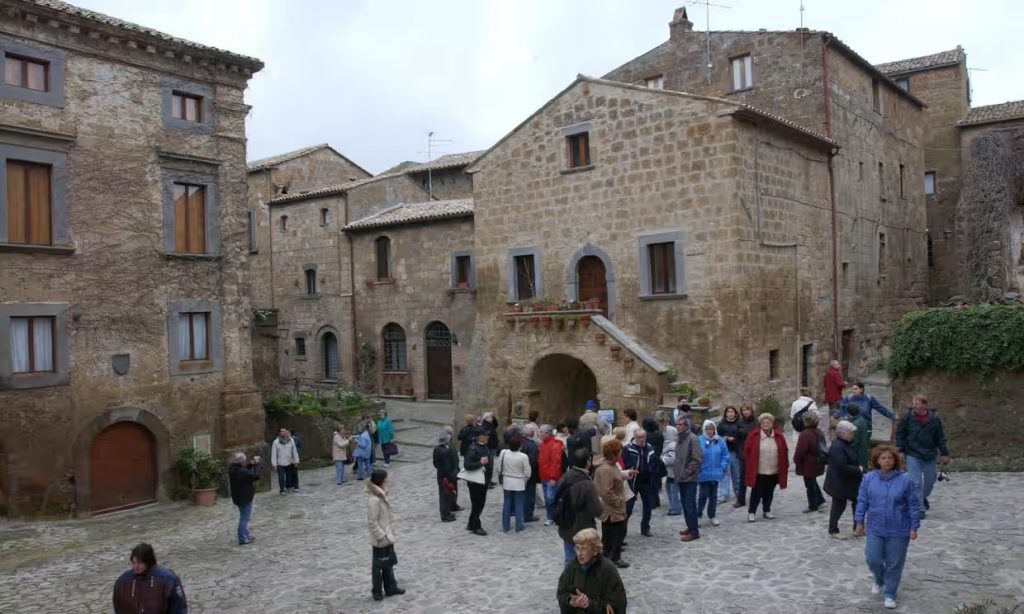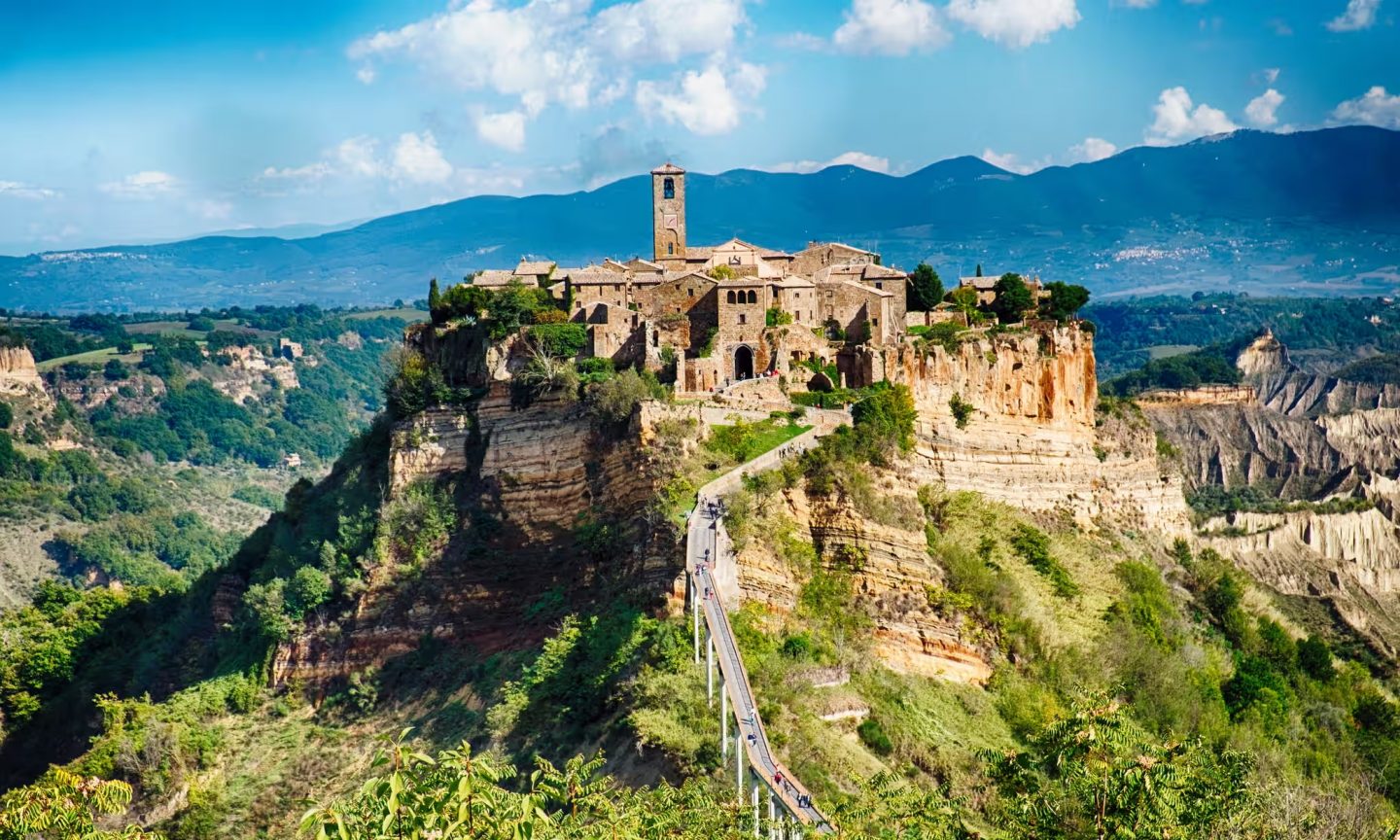By charging visitors to enter its crumbling walls, the medieval town of Civita di Bagnoregio has turned the threat of destruction to its advantage
The Guardian – As leaders of some of Europe’s most popular holiday destinations ponder recent anti-tourism protests, they should perhaps take inspiration from the mayor of Civita di Bagnoregio, a hamlet perched on a plateau of volcanic rock surrounded by steep ravines in Italy’s Lazio region.
Francesco Bigiotti, who also manages the main town of Bagnoregio, has rushed in where other mayors fear to tread – anyone wanting to cross the footbridge to visit his medieval village must pay.
Civita, a tiny settlement about 74 miles north of Rome, founded by the Etruscans more than 2,500 years ago, is the only town in Italy to charge an entrance fee.
A €1.50 toll was introduced in 2013 and increased at the beginning of August. Visitors are now required to pay €3 on weekdays and €5 on Sundays or public holidays. For a few euros more they can get a private tour of the village – home to a year-round population of just 10 people – or a bruschetta and a glass of wine.
Authorities in overcrowded Venice, where in July an estimated 2,000 protesters marched against mass tourism, have long contemplated charging people to see one of their most prized assets, St Mark’s Square, but the idea has always proved too contentious.
Bigiotti enthuses about his hamlet’s initiative, which has coincided with a surge in visitors – Civita is forecast to attract 850,000 people this year, compared to 40,000 in 2010.
“The ticket price has not discouraged people at all,” he told the Observer. “In fact, it has increased the quality of tourism. In some ways, it makes the site more precious. Even the tourists are more attentive, they stay for longer and are more respectful.”
While the ticketing system allows Bigiotti to monitor the flow of tourists, it also enabled him to pull off another significant feat: he has abolished communal taxes, comparable to council tax, in both Civita and Bagnoregio, which has a population of 3,650. He also boasts of a zero unemployment rate thanks to the 400 jobs created via the 200 or so tourism-linked businesses that have sprung up in the past few years.

“Bagnoregio is the only Italian town where you no longer pay communal taxes,” he said. “We’ve been able to improve local services – the health service is better, there is transport for disabled people. We’re managing to live autonomously thanks to tourism and culture. Really, it’s a miracle.”
Indeed, a miracle of sorts has occurred. Civita became known as “the dying town” due to the forces of nature – earthquakes, landslides and floods – that have threatened its survival since the 17th century. But far from being a death knell, the label – which even features on signposts leading to the village – has proven to be a deft stroke of marketing.
A series of landslides in 2014 and 2015 saw some of its medieval properties plummet into the ravine when the sides of the volcanic outcrop gave way. Geologists have described it as melting like an ice cream. However, the disaster encouraged a group of Italy’s cultural heavyweights, including Oscar-winning composer Ennio Morricone and director Bernardo Bertolucci, to back a petition calling for Civita to be given world heritage status by Unesco. The regional government of Lazio pledged more investment to preserve what was becoming increasingly recognised as a cultural and historical gem, and a bid for the site to be listed was submitted in March this year.
Some of the tourists’ entrance fee also goes towards preserving Civita’s fragile beauty, Bigiotti said. But not everyone is happy to pay for the privilege. A group of Italians could be heard grumbling when the Observer visited last week, before begrudgingly handing over their cash and joining the flow clambering up the sloping footbridge, which was partially blown up by the Germans during the second world war.
The town is inaccessible to vehicles apart from mopeds and a couple of tractors, used to transport construction materials and waste, or to ferry supplies for the handful of restaurants and bars. But once through its main entrance – a huge stone gateway – any irritation at having to pay quickly evaporates as visitors are taken back to the middle ages.
The main piazza contains a bell tower and a 13th-century church. The town’s few narrow streets, flanked by stone houses, are meticulously maintained. There are a couple of B&Bs to host those who want to stay the night, while the majority of the properties have been turned into holiday homes. There is little to do apart from gaze at Etruscan remnants, have a bite to eat or buy a souvenir.


